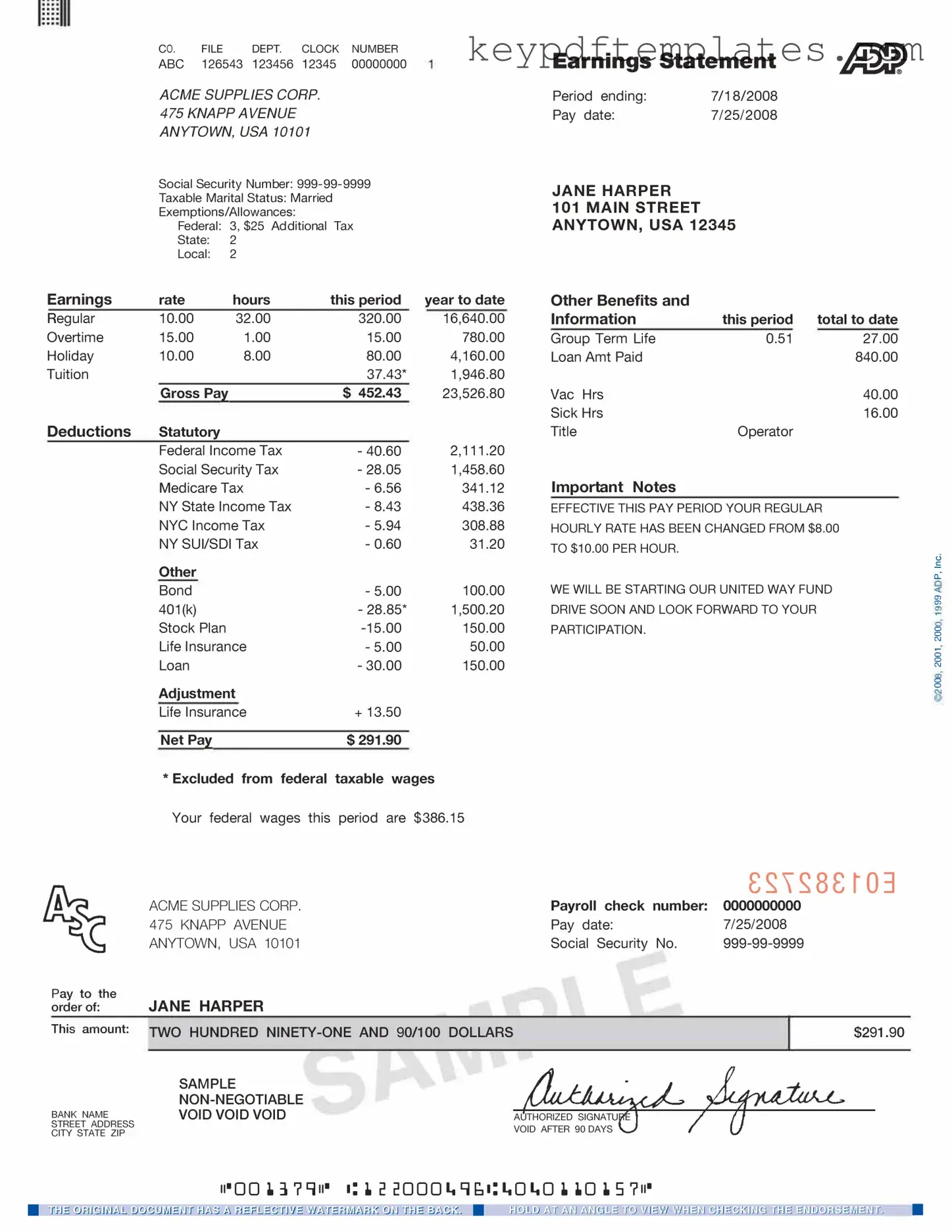Get Adp Pay Stub Form
The ADP Pay Stub form is a document that provides employees with a detailed breakdown of their earnings and deductions for a specific pay period. It serves as an important record for understanding one's salary, taxes withheld, and other contributions. Familiarity with this form can help employees manage their finances more effectively.
Modify Document Online
